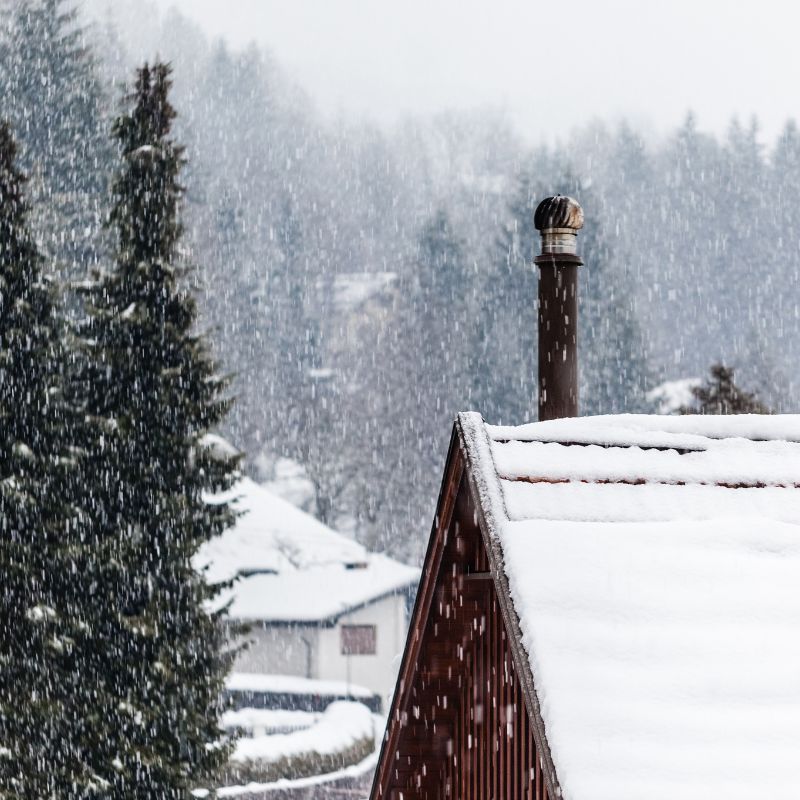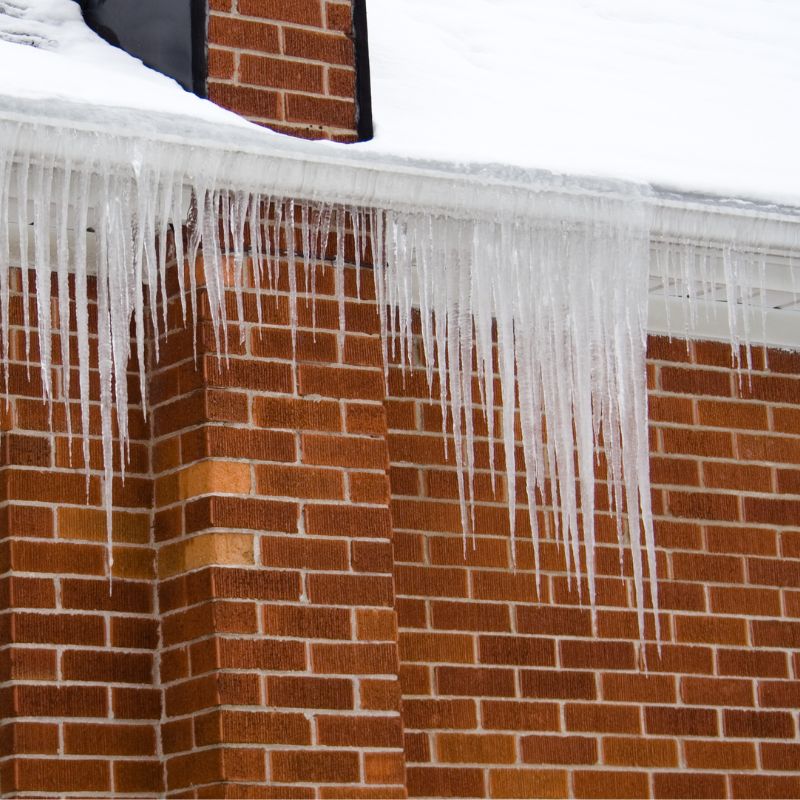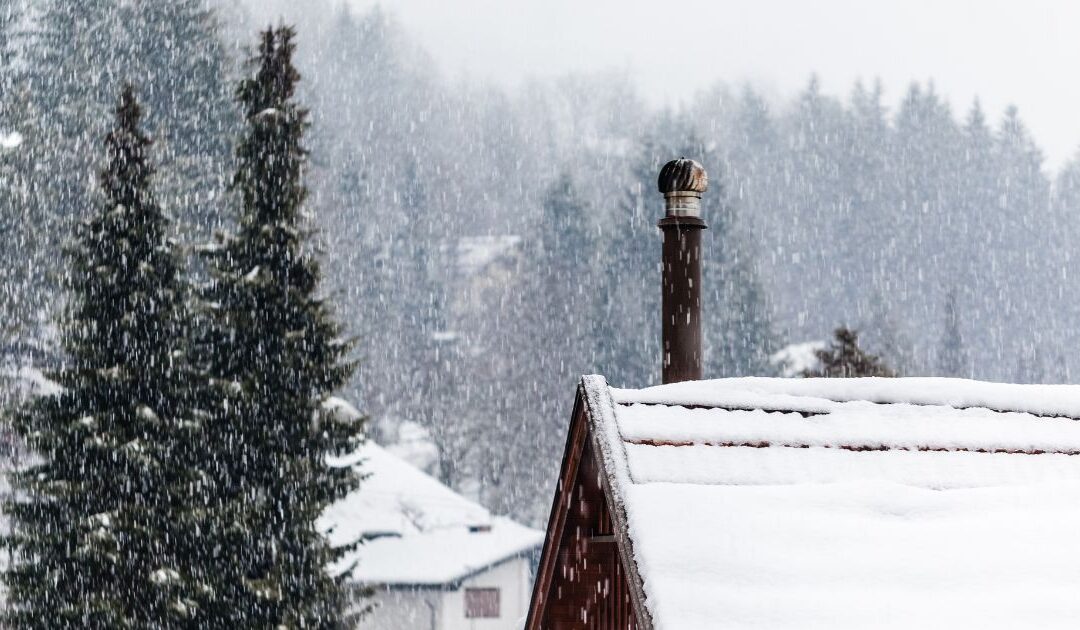While winter has its own beauty, it also comes with many challenges – especially for homeowners. One common issue that arises during cold weather is the formation of ice on chimneys and chimney caps. While it may seem like a minor inconvenience, ice buildup can lead to significant problems if left unaddressed. When warm weather cools to freezing temperatures, chimneys are prone to cracking, crumbling, and expedited deterioration.
Our team at English Sweeps are experienced and knowledgeable in the area of winter maintenance for chimneys. We’ve put together some tips for how to take care of your chimney – and your chimney caps – as well as why it’s important to do so. We offer the help you need to make sure your home’s chimney is functioning at its best. Call or schedule with us online today.
Why Is Ice Forming on My Chimney?
Ice buildup on chimneys typically occurs due to a combination of factors including fluctuating temperatures, moisture, and inadequate ventilation. When warm air from the interior of your home rises and meets the cold surface of the chimney, condensation occurs. This moisture can then freeze when temperatures drop, leading to the formation of ice.
Another way ice forms on your chimney is by snow accumulation. Snow that falls on the roof and chimney can melt and flow down to the chimney, where it refreezes due to the colder temperatures.

This process can result in the buildup of ice along the chimney structure, including the chimney cap. It can also lead to serious problems if left unchecked.
Potential Risks Associated With Ice on Your Chimney
While a layer of ice on your chimney may not seem like a cause for concern, it can pose several risks if not addressed promptly:
- The Freeze/Thaw Process: As temperatures fluctuate, moisture on your chimney’s masonry expands and contracts as it freezes and thaws. During winters like the ones we have here in eastern Missouri, it is common for water to freeze at night and then melt during the day, which means there is a consistent expanding and contracting happening within the pores of your masonry. Over time, this process can lead to cracks, spalling, or even the collapse of the chimney structure.
- Blocked Flue: Ice buildup on the chimney cap or flue can obstruct proper ventilation, leading to issues such as poor draft, smoke backup, or in rare and extreme cases, even carbon monoxide poisoning inside the home.
- Water Damage: As ice melts, it can create pathways for water to seep into the chimney system and the interior of the home. This can result in water stains, mold growth, and damage to ceilings and walls.
What Can I Do About Water & Ice Damage on My Chimney?
If you notice ice buildup on your chimney, it’s important to prevent damage to your chimney and ensure your fireplace or wood stove is working safely.
✓ Be Proactive
The most important measure you can take to avoid the freeze/thaw process is to be proactive about your chimney’s maintenance. Before the snow even falls, having your chimney professionally waterproofed is the best defense you can provide for your chimney system. In addition to waterproofing, having routine inspections scheduled will assure that your chimney is in top shape and that vulnerabilities are addressed long before they become major problems.

Our team at English Sweeps has made it our duty to serve our community with the most highly trained, most professional, and most knowledgeable chimney technicians available. Our services will provide you with the comfort of knowing that your fireplace and chimney are under the best possible care.
✓ Inspect Regularly
Make it a habit to visually inspect your chimney, especially after snowfall or freezing rain. Look for signs of ice accumulation on the chimney structure and the chimney cap.
✓ Clear the Snow & Ice
Safely remove any snow or ice buildup on and around the chimney using a roof rake or a long-handled brush. Be cautious when working on a ladder or roof to avoid accidents.
✓ Have a New Chimney Cap Installed
If your current cap seems to be failing you, it may be time to invest in a new one. Our professionals at English Sweeps are experts at chimney cap installation and we can even suggest caps that will fit your needs perfectly.
✓ Improve Insulation & Ventilation
Address any issues with insulation and ventilation in your attic and roof to minimize heat loss and reduce the likelihood of condensation on the chimney surface.
Keep Your Home & Chimney Safer – Work With Us
The negative effects of ice on your chimney and chimney cap can be far-reaching and costly if left unattended. Ice buildup can restrict airflow and ventilation This reduces the efficiency of your wood stove or fireplace and increases heating costs. In addition to that, the risk of structural damage increases with every fluctuation in temperature as the freeze/thaw process tears away at your brick and mortar.
In extreme cases, clogged up flues and inadequate ventilation can pose safety hazards such as smoke backup, carbon monoxide poisoning, and chimney fires. When ice builds up on your chimney, the amount of water collected can become greater than your chimney system is designed to withstand, increasing the risk of water intrusion into the chimney system and the home. This can lead to water damage, mold growth, and compromised indoor air quality.
Get a head start on keeping your chimney healthier and your home safer. Call us today at English Sweeps to schedule your routine inspection and maintenance.


Recent Comments